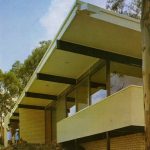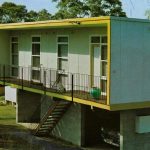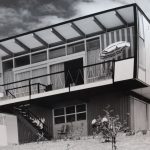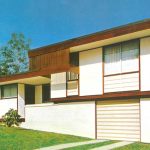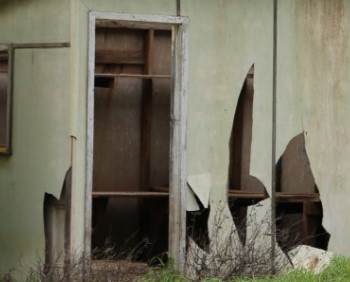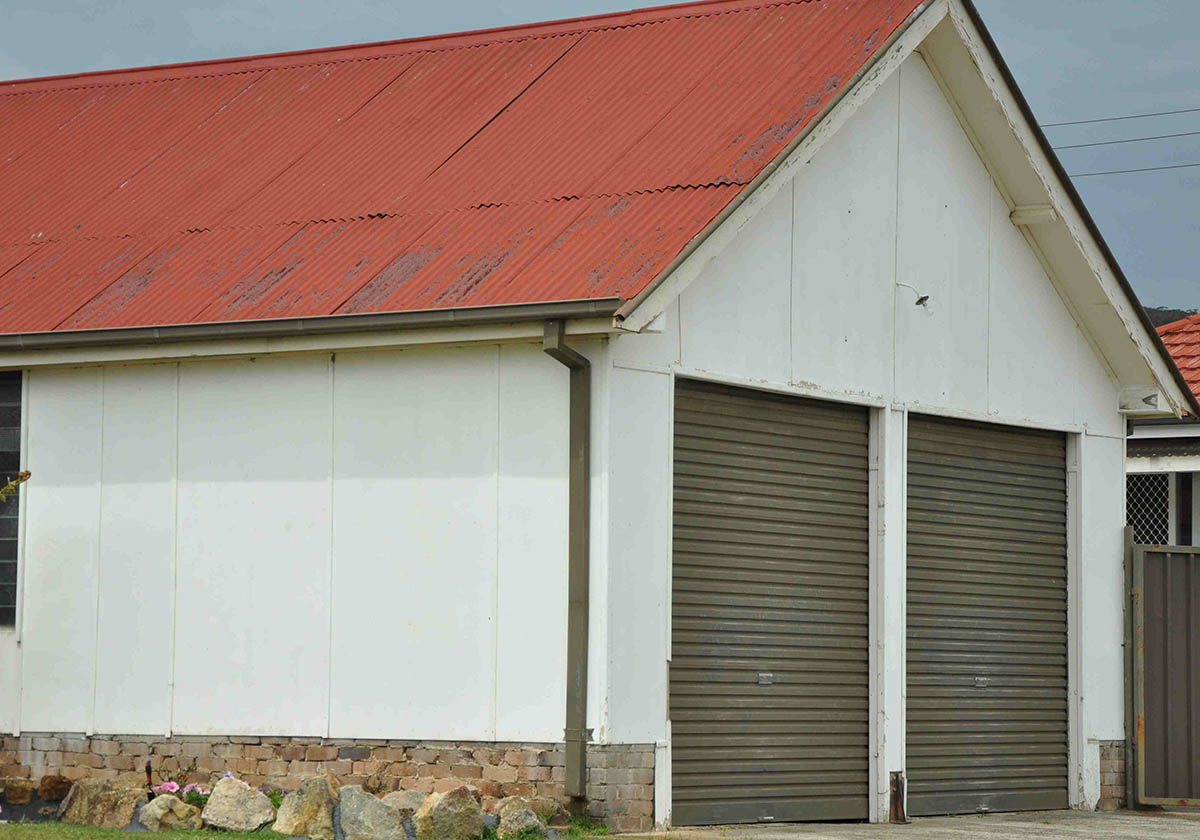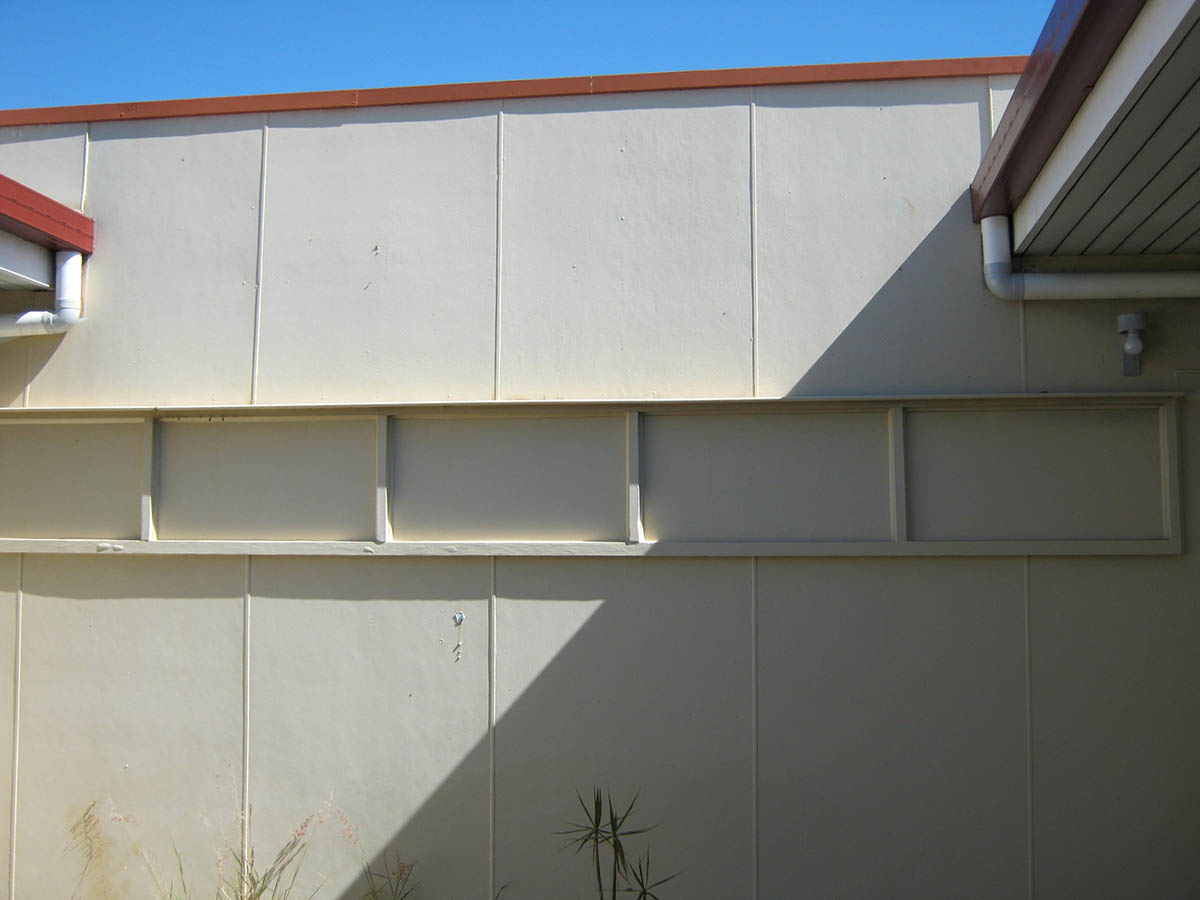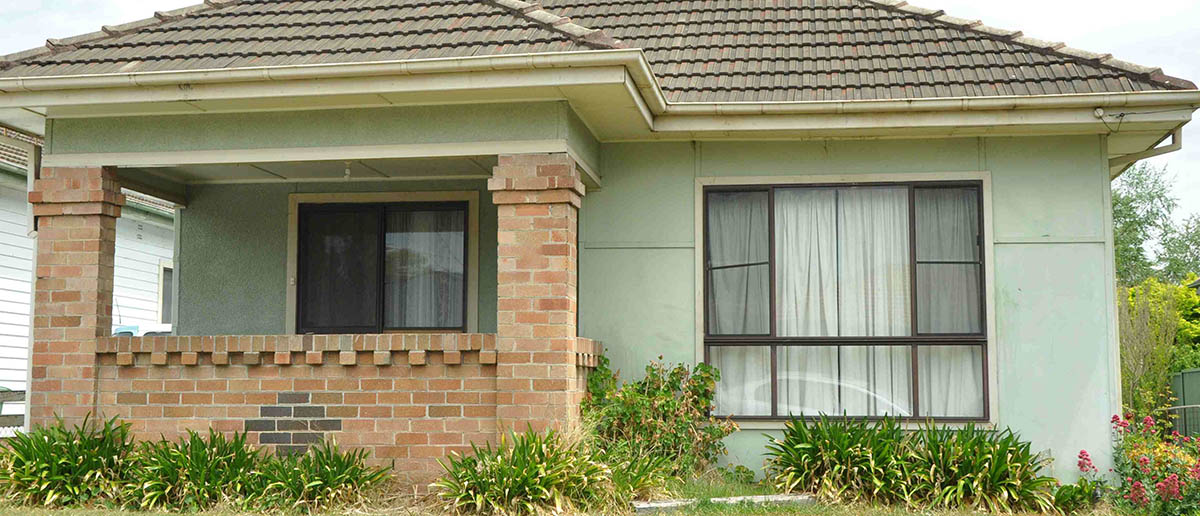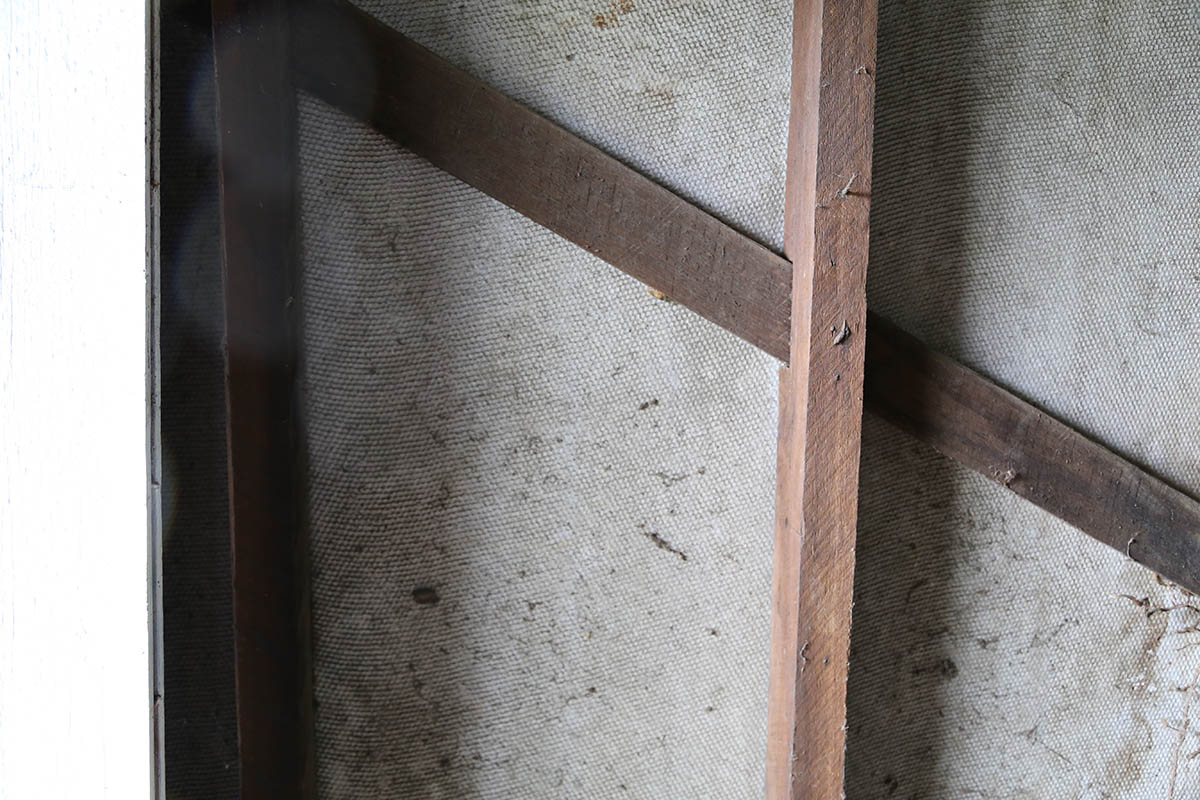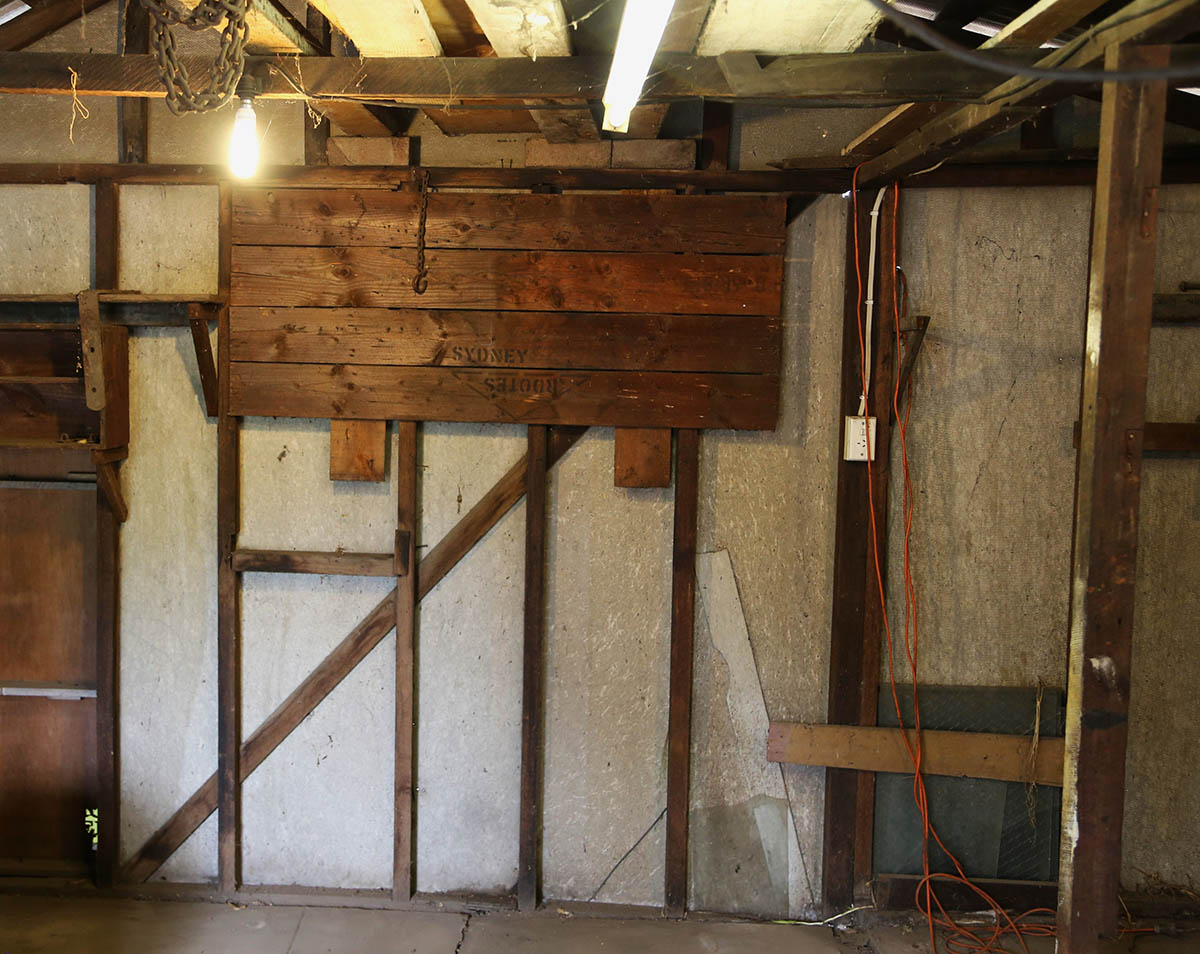Home / Building structures & components / Walls / Asbestos cement flat sheeting – external
Asbestos cement flat sheeting – external
Description
Fibrous asbestos cement sheeting, commonly known as ‘Fibro’, which contained around 15% chrysotile asbestos.
Used as external wall sheeting throughout 20th century until production ceased in mid 1980s.
Also used on gable ends, different facias, curtain walling, eave soffits, balustrades, fencing and formwork.
Installed with AC moulded angles, corner moulds, battens and cover strips for jointing.
Hardiflex, when first introduced into the market in 1964, contained chrysotile asbestos and cellulose fibre. Following the cease of asbestos use in the 1980s, Hardie’s manufactured a near identical cellulose fibre product to Hardiflex under the name Hardiflex II. This may be branded on the underside edging. If unsure, sampling for testing by a NATA accredited laboratory is the only method of confirming the non-asbestos product.
See also: Compressed flat asbestos cement sheeting.
Years of production/use
Prior to 1990
Asbestos silicate raw material varied between manufacturers. CSR Fibrock used crocidolite (Blue) asbestos.
Brands/products
- Fibrocene
- Fibrock
- Durabestos
- Fibrolite
- Tasbestos
- Flexboard
- Asbestolite
- Hardiflex
- Hardie’s compressed sheet
- Fibrobestos
- Wunderflex
- Endurite
- Versilux – sold only in Qld, WA and northern NSW
Residential uses
Houses, garages, sheds, external toilets, chook pens, boat houses
Industrial uses
Foundries, factories, warehouses, substations, workshops, community and government buildings, office buildings, shops, churches, rural and others
Be aware
Breakages are characteristically jagged. Painted AC sheeting may not be visually obvious as ACM. May be covered in render or other material.
